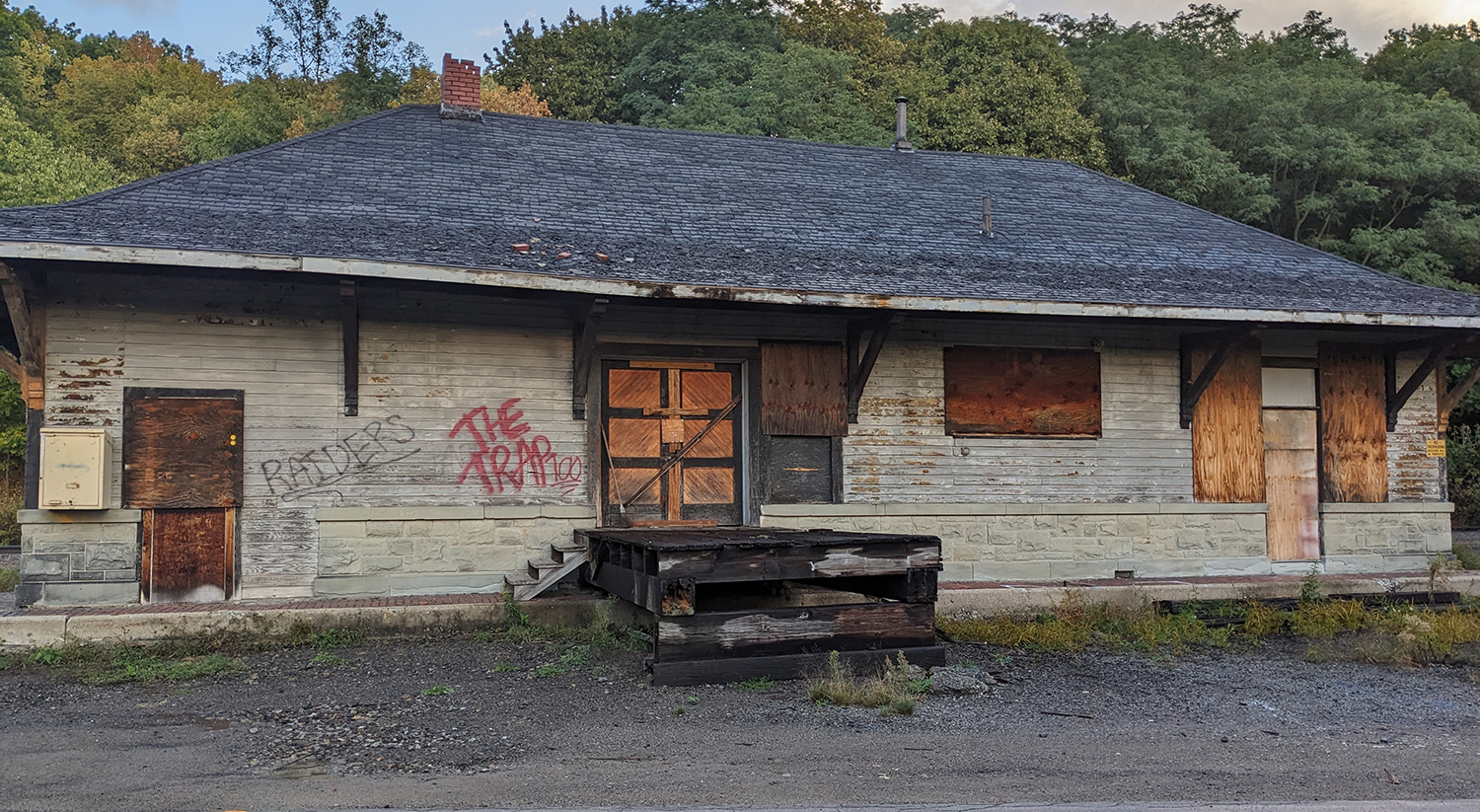2024 Five to Revive
The heart of preservation is community revitalization. In 2013, we launched the Five to Revive program, a list that calls attention to five properties in Western New York in need of investment. Whether buildings, landscapes, or structures, they are significant historic properties whose rehabilitations can become catalytic projects for the neighborhoods and communities that surround them.
Each year we work collaboratively with owners, municipal officials, and developers to facilitate investment and foster rehabilitation. The goal is to return these important historic resources to a prominent in their respective communities, as economic and social assets that spark even more investment and revitalization.
We invite you to learn more about the 2024 Five to Revive below.
Vacuum oil site
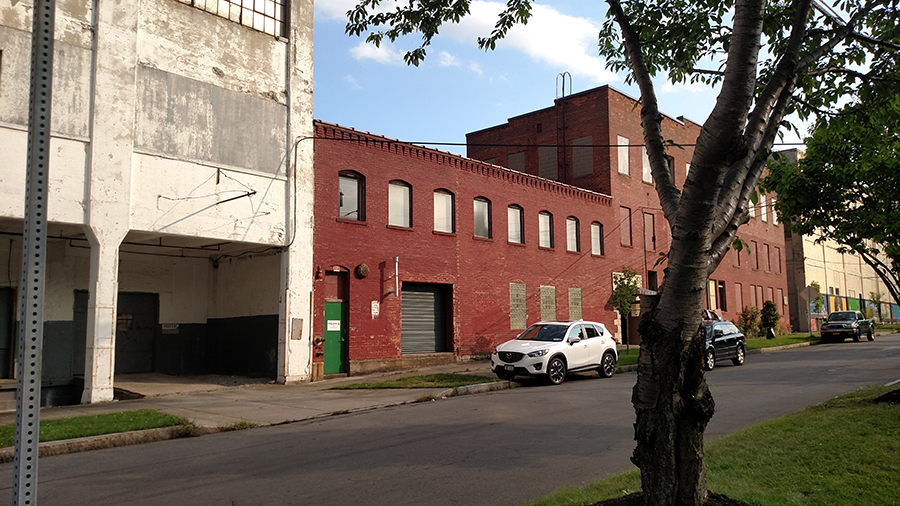
City of Rochester, Monroe County
The Vacuum Oil Company was founded in 1866 as a partnership between carpenter and inventor Matthew Ewing and investor Hiram Everest. Vacuum produced paraffin wax, lubricating oils, kerosene, and naphtha at its refinery, bulk oil storage, and oil blending facility, which operated from about 1866 to about 1935 on approximately 30 to 40 acres of land east of Exchange Street and both north and south of Flint Street. John D. Rockefeller’s Standard Oil bought a controlling interest in Vacuum in 1879. Operations at the refinery ceased in 1935. Vacuum and Standard merged in 1959 and became Mobil Oil. Mobil then merged with Exxon in 1999, and today, the City of Rochester, along with the ExxonMobil Corporation, owns portions of the historic Vacuum campus.
Due to its historical use, the Vacuum Oil refinery campus is currently a brownfield site: a property whose redevelopment is complicated by the presence of industrial pollution. The site of the former refinery is heavily polluted, its soil and groundwater are contaminated, and cleanup and redevelopment will be a costly and time-consuming venture. The City of Rochester is committed to the cleanup and redevelopment of a portion of the historic site and have identified an approximately 24-acre Vacuum Oil Brownfield Opportunity Area (BOA) as part of the New York State Department of State’s Brownfield Opportunity Areas Program, which provides communities with guidance, expertise and financial assistance to complete revitalization and implementation strategies for neighborhoods or areas affected by brownfields. ExxonMobil, who owns parcels of the BOA located at 5 and 15 Flint Street is similarly invested in redeveloping the site to return it to beneficial use for the community.
Potential reuses of the Vacuum Oil BOA include mixed-use commercial and residential development (namely mixed-income and student housing) and the creation of parks, trails, and waterfront access for the community. The Plymouth-Exchange (PLEX) Neighborhood Association has advocated for the development of mixed-income housing due to the area’s large minority population. An implementation plan for the site’s redevelopment is underway; however, it remains uncertain whether the factory and warehouse buildings, sitting in a stew of hazardous substances since Vacuum’s closure, can be rehabilitated.
With the Vacuum Oil Brownfield Opportunity Area, the City of Rochester can become a nationwide model for the redevelopment and reuse of post-industrial brownfield sites.
NAPLES MEMORIAL TOWN HALL
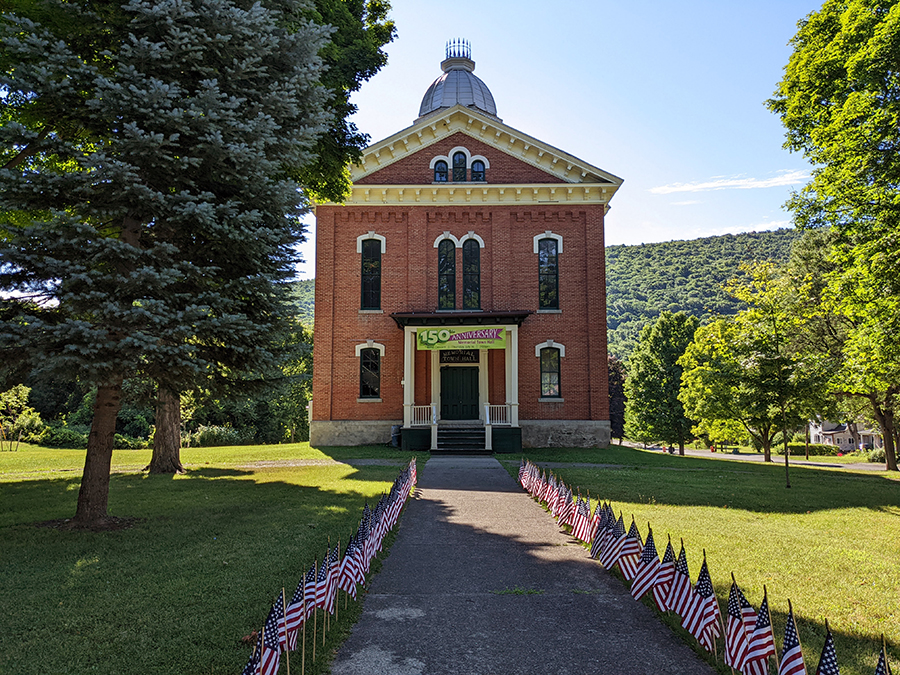
Village and Town of Naples, Ontario County
Located in the scenic rural village of Naples in the Finger Lakes, the majestic Italianate style Naples Memorial Town Hall was built between 1870 and 1872. Following the Civil War, Naples uniquely forwent a traditional soldiers’ monument and instead chose a town hall to honor the more than 200 men from Naples who served in the war. Designed by noted architectural firm A.J. Warner & Company of Rochester, the Memorial Town Hall was the center of the village and town of Naples’s social and recreational activities until World War II. From 1942 to 1972, the building was privately owned and used for commercial and light industrial purposes. It was reacquired by the Town in 1972 and was listed in the National Register of Historic Places in 1996.
Today, the Memorial Town Hall serves as a community and event center and host site for the annual Naples Grape Festival. Though in use, the building needs necessary repairs to ensure its longevity, including a new roof and the historically sensitive addition of an elevator to make the building ADA accessible. Rehabilitation of the Memorial Town Hall will help preserve a distinctive piece of western New York’s architectural heritage, benefit the local community by opening the building to new uses, and promote heritage tourism in Naples.
PALMYRA-MACEDON AQUEDUCT

Town of Macedon and Village of Palmyra, Wayne County
Located in Aqueduct Park just west of the village of Palmyra and adjacent to Erie Canal Lock No. 29, the Palmyra-Macedon Aqueduct (also known as the Ganargua Creek Aqueduct) was built in 1857 to carry the water of the Erie Canal over the Ganargua (or, Mud) Creek in the town of Macedon. The aqueduct was in service until 1918 when it lost its original purpose with the opening of the Barge Canal, which succeeded the Erie Canal and other canal systems in New York State.
Today, the aqueduct is part of the Erie Canal Pathway, and the remains of the structure include a towpath bridge and stone supports for the wooden canal prism. Erosion caused by the Ganargua Creek has threatened the stability of the aqueduct’s west embankment. In May 2021, the New York State Canal Corporation diverted the Erie Canal Pathway away from the structure and onto Route 31 due to concerns about a potential spillway collapse. Plans to reinforce the embankment were complicated by the discovery of more severe erosion than initially anticipated. Additional challenges include the annual accumulation of debris and the function of the spillway, which directs water from the canal to Ganargua Creek.
According to the Canal Corporation, the aqueduct is one of only a handful of such structures left throughout the entire New York State canal system. Canal Corporation engineers continue to explore solutions and hold advisory meetings to solicit community feedback. The fate of the aqueduct mirrors that of the Macedon Aldrich Change Bridge, which was removed from the canal in 1915 but later acquired by the Town of Macdon in 1996 and restored in 2004 as part of the Palmyra-Macedon Towpath Trail on the New York State Heritage Trail system.
Potential options for the rehabilitation of the aqueduct include repairs to rebuild its embankment and stabilize it in place, or the careful deconstruction and relocation of the structure to preserve it as a vital piece of state history and to give it a new purpose for the appreciation of future generations.
WARSAW PARK STREET TRAIN DEPOT
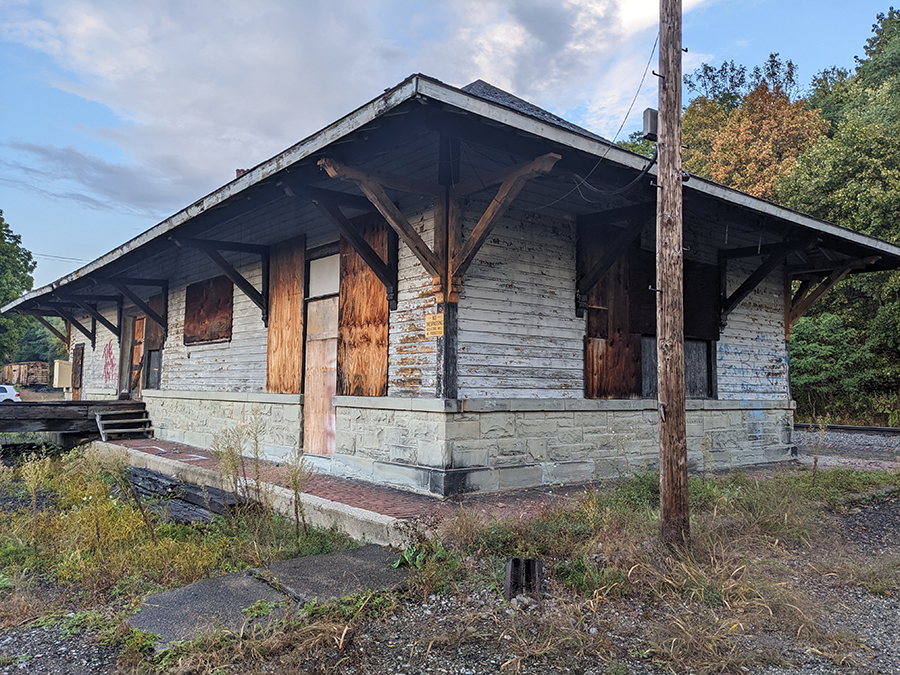
Town of Warsaw, Wyoming County
The Warsaw Park Street train depot was built in 1906 as part of a complex of railroad buildings during the town of Warsaw’s golden age of manufacturing for the Buffalo, Rochester & Pittsburgh Railway (later the Baltimore & Ohio Railroad). The passenger depot opened in February 1906 to accommodate passengers on the BR&P and was described by The Western New-Yorker as “a credit to the town.” Newspaper articles from the time noted its handsome furniture, men’s and women’s waiting rooms, ticket and telegraph offices, and electric lighting. The depot closed in August 1953 when passenger train service was discontinued. Railroad ridership had changed, and the line was no longer deemed financially viable by the then Baltimore & Ohio Railroad.
Warsaw was at one time home to three depots, including one on the 20A “West Hill,” and one on Main Street; however, only the Park Street depot remains. The building was used for storage for several decades and is in a deteriorated condition. It has been determined eligible for listing in the National Register of Historic Places and was designated with a Pomeroy Foundation marker in 2022. The depot is currently owned by the Genesee & Wyoming, Inc. Railroad, who has no viable use for the building. The Warsaw Historical Society has advocated for stabilizing the depot and moving it from its present site to a new location where it could be repurposed to serve the community. Such action would also preserve one of the last remaining examples of Warsaw’s significance as an early-twentieth century hub of transportation and manufacturing.
Grassroots Preservation Organizations
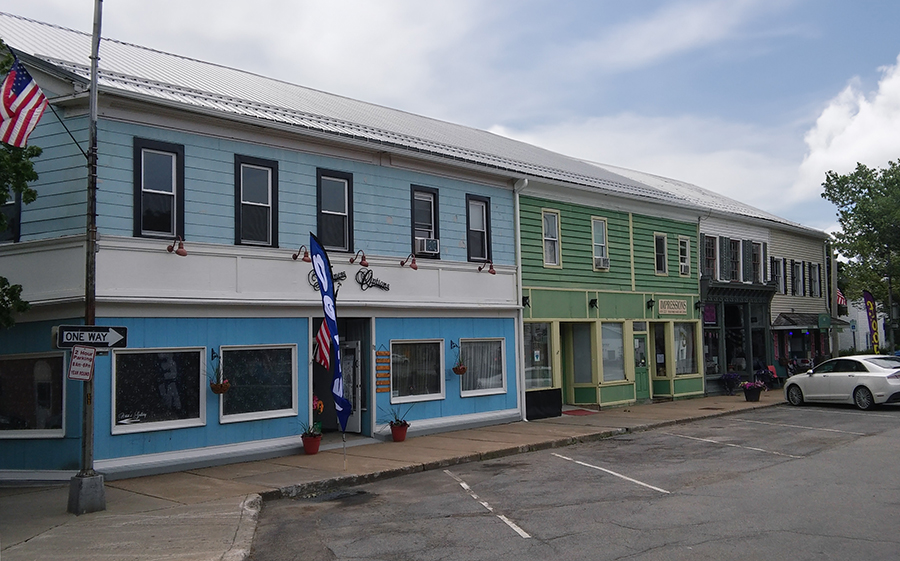
Thematic Listing
New York State has few grassroots preservation organizations, especially in our rural small villages and towns. There are a number of Historical Societies, but their mission doesn’t always include preservation. Concerned citizens are already overcommitted, so it can be difficult to start a new preservation group. However, a preservation-based economic development organization like Main Street America may be just what these communities are looking for.
Main Street was established as a program of the National Trust for Historic Preservation in 1980 to address the myriad issues facing older and historic downtowns at that time. Working with a nationwide network of coordinating programs and local communities, Main Street has helped over 2,000 communities across the country bring economic vitality back downtown, while celebrating their historic character, and bringing communities together.
Therefore, The Landmark Society advocates for a Statewide Main Street program that engages our communities in Western New York, especially those in the rural areas of our nine-county region. We will work with all interested parties to achieve this goal and will share the strong message of the Main Street approach within our region as we work towards this objective.

